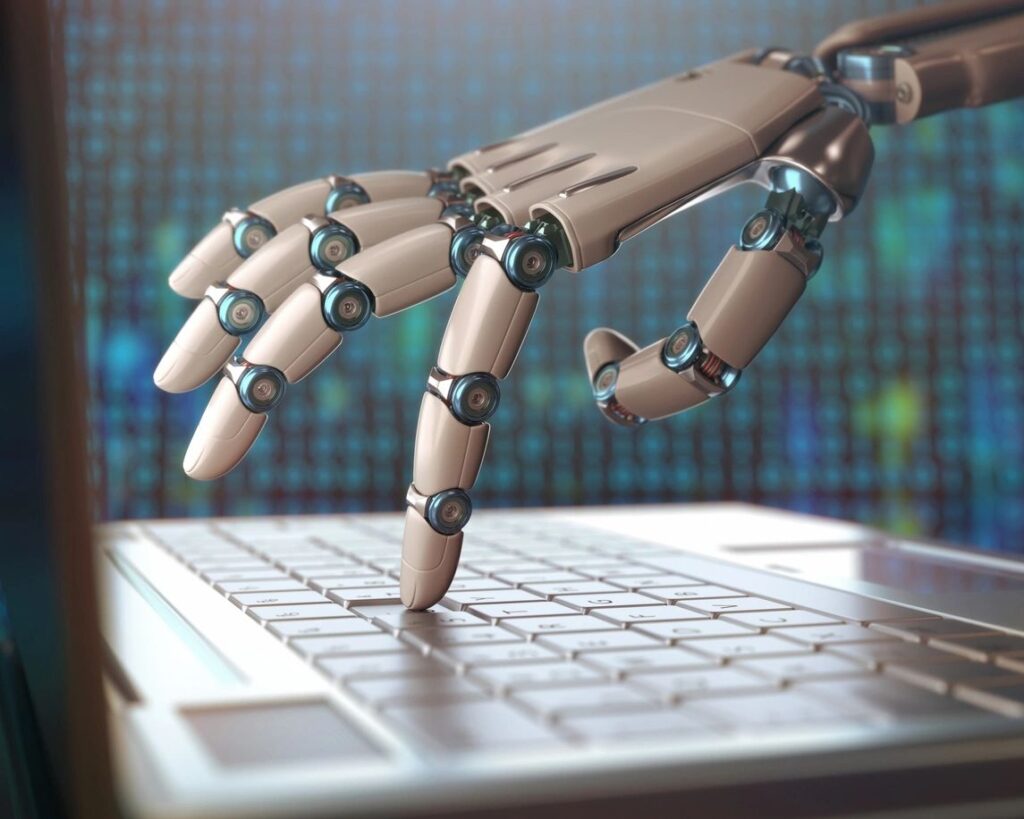Although medical robotics has been a field that has been around since the late 1980s to the early 1990s, it has only been recently that the industry has taken off. The very first mechanical robot to be used in surgery was the Puma 560 in 1985 for the precise positioning of cannula for brain biopsies. Ever since then, medical robots have been popping up everywhere and with our new and recent technology, we have the ability to develop even more specialized and precise robots that can aid in even more complex surgeries. As a result, the industry is exponentially growing and expanding with each new innovation. According to GlobalData, the number of robotic surgical systems is predicted to increase by 6.5-12% from 2020 to 2030.
Johnson & Johnson ($JNJ)
Although Johnson & Johnson ($JNJ) is already a well established company, they are an excellent example of a company that is expanding upon the medical robotics industry. They recently unveiled their new surgical robotic system, Ottava which will begin verification and validation processes in 2021, then begin clinical trials in the second half 2022. It will compete with Intuitive’s da Vinci and Medtronic’s Hugo.This new system is designed to have six arms to have more control and flexibility in surgery, while the arms will be integrated into the operating table so that the surgeries have a smaller footprint. The smaller footprint will result in increased patient access, increase space in the operating room and improve workflow. Previous surgical robots only had 3 or 4 surgical arms. The greatest advance that Ottava is bringing to the market is the integration of advanced visualization, machine learning and general data capabilities into the system. Johnson and Johnson is committed to growing the robotic surgery market through means other than Ottava. In 2019, they acquired Auris Health and its Monarch system for bronchoscopic procedures. Fred Moll, former CEO of Auris Health and now CDO of Robotics for Johnson and Johnson, says that Ottava has “not only the ability to build a machine that helps clinicians accomplish a procedure, but give information guidance, and sometimes automation to certain parts of a procedure that technology can be smart enough to understand clinically what the clinician is trying to accomplish, and be a smart assistant”. Even with the acquisition, Johnson and Johnson still only provides 1.7% global share of the overall market for robotic surgical systems. Their current stock price is at $163.37 with a market cap of $420.22 billion.
Myomo ($MYO)
Another one of these emerging medical robotics companies is Myomo ($MYO). Myomo is a company founded in 2004 by Paul Gudonis. Their goal is to “improve the lives of individuals with upper extremity paralysis by providing innovative medical devices”. Using patented technology developed at MIT, Harvard Medical School and by the company, they have created the MyoPro, which is a a line of lightweight, non-invasive, powered arm braces that can restore the function of paralyzed or weakened arms, specifically for patients who have suffered from a stroke, and spinal cord or nerve injury. This device is different from any other that is currently on the market because it is able to sense a patient’s own neurological signals through non-invasive sensors on the arm. Patients that use the MyoPro could be able to restore their ability to use both their arms and hands so that they can return to live an independent life and even get back to working. The MyoPro can also rehabilitate the extremities through muscle re-education and increasing the range of motion. The MyoPro arm and hand orthosis device works by reading the faint nerve signals (myoelectric signals) from the surface of the skin (fully non-invasive, with no implants) then activating small motors to move the limb as the user intends to, with no electrical stimulation. Unlike other prosthetic devices, the user is able to completely control their whole upper extremity from their hand, to the wrist, elbow and arm on their own. All the robotic arm does is amplify the weak muscle signals to aid in movement. The patient’s brain is the controller and the non-invasive sensors send EMG signal processing. There is an incredible amount of growth potential for Myomo. Sizing the market opportunity, there are over 800,000 new incidences of strokes per year. The trends in healthcare are fueling Myomo’s growth. The pool of patient candidates is expanding as the number of stroke incidences increases with the aging population and underlying health conditions. In addition, the U.S population is shifting from centralized to decentralized patient care. This means that people are moving from rehab clinics to at home use. Myomo’s revenue growth has grown over 100% for the past few years. In Q1 2021, their revenue growth was 132%. In addition, they are also emphasizing their growing Direct Billing channel, which is when the insurance company bills the insured directly and then the insured pays the insurance company. This resulted in a higher average selling price and higher gross margin per unit, which increased their revenue. In addition, their cash position as of 3/31/21 was $17.4 million. With lower expected cash burn in 2021 as revenues scale, they have sufficient cash without the need to access capital until well into 2022.
Stereotaxis ($STXS)
Stereotaxis ($STXS) is another publicly traded company that is focusing on surgical robotics. In 2020, they installed the first Genesis Robotic Magnetic Navigation (RMN) systems to treat heart rhythm disorders in Helsinki, Finland and Phoenix Arizona. RMN helps the robot be more precise and safe for cardiac ablations, a common minimally invasive procedure to treat arrhythmias. RMN is the process of using robotic technology to direct magnetic fields which control the movement of magnetic tipped endovascular catheters inside the chambers of the heart during cardiac catheterization surgeries. Genesis is a leap forward in the RMN field and represents the future of robotics in electrophysiology, by changing the magnets themselves. They have redesigned the magnets and the way they are manipulated to be smaller, lighter, faster, and more flexible. The Genesis RMN uses smaller magnets that rotate along their center of mass, which allows for extra responsiveness and increases physician control. With these improvements, the Genesis System is 70% to 80% faster than Niobe, another RMN system previously designed by Sterotaxis. The magnets in the Genesis system are held on flexible and rugged robotic arms which greatly increases the range of motion, which will enhance x-ray angulations. The smaller design also provides physicians and nurses with greater access to the patient and increased space in the labs for a more spacious work environment. The current share price for Stereotaxis is $9.69 as of 6/24/2021. The innovation behind this specific industry means that there the room for growth is practically infinite. There are over 5,000 electrophysiology labs performing cardiac ablation right now, which provides a market for robotic system sales. New clinical applications means there are multiple endovascular & endoluminal markets to be addressed that are each over $10 billion.
Society is increasingly moving towards technology to be quicker and more efficient, and not to mention safer. Medical robotics are no exception. If people are willing to pay more for faster internet or a faster car, rest assured that the medical industry will be more than willing to spend a little extra money if it means they would be able to perform surgical procedures quicker. This is because the faster that they are able to perform procedures, the more volume they will accomplish which will quickly become profits. That is why the medical robotic industry will continue to grow and offer secure investment opportunities for the future.








3 thoughts on “MEDICAL ROBOTICS: A PROFIT MACHINE?”
Comments are closed.